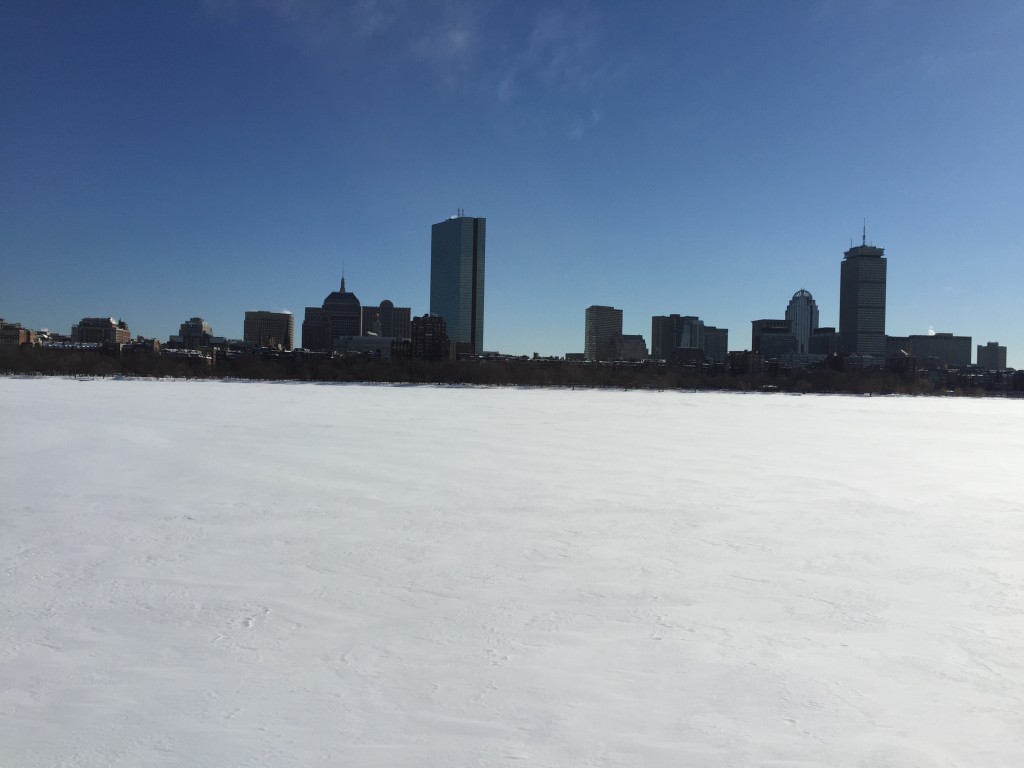This Guide has been laying low for a while. We’re sorry! (Well, I’m sorry.) Too much time skiing, running stairs, and planning that trip to Wisconsin in February. (And Norway earlier in the month.) Oh, and working with the Birkie to chat with them about many of the upcoming changes. But there are some changes coming, and we’ll detail them on this post, elsewhere on this page, and in the future.
The big thing are start line enhancements and the Birkie Bridge, all part of the Birkie’s Five Year Plan (I knew it was a Commie plot!). The start line could always use some enhancements, especially now that Telemark is closed. While the airport has plenty of space, there is no permanent structure there, and staging 10,000 starters over two hours is daunting, especially on a cold or snowy day. It would be nice to have a building, but that level of infrastructure needs long-term planning as well—you need to finalize the trail before you put up a barn. The idea is to build a start area which will have infrastructure and a permanent routing to the rest of the trail, as opposed to the current start which crosses several easements and is only used on race day.
The pros of a new course? No driveways, all-year access, and a better experience. The cons: the course would no longer start with the same gravitas of facing down the Power Lines Hill, but take a more gradual route. But there will still be hills on the Birkie Course. We likely won’t see major changes this year.
But there will be a Birkie Bridge. 49.5km away, there will be no more soft snow festival crossing Main Street, but a bridge instead. The bridge will be, well, interesting. It will give a bit of a climb right before the finish, and then a steeper downhill to Main Street. It should be plenty wide enough (24 feet), although a climb is always going to require more room than would normally be required. It will be fun to watch skiers crest the bridge, take a dive down the hill and carry that momentum down Main Street. And it should make for some fast finishes. And in the long run, there is some chatter about underpassing other main roads in the future. (And by main roads, I mean “roads.” It’s not like there are that many of them.)
It’s also a good segue to talk about traffic. The bridge will mean that there will be no more Highway 63 detour, and all the traffic through Hayward will no longer back up all afternoon. This should be nice, although it will mean that the course to the lake will no longer be a pedestrian zone during the race, so take care if you’re crossing the road to the lake during the race. (I can only assume traffic will be gawking at the skiers above and be going quite slowly.) And the snow on the bridge should be much firmer than in past years (but hopefully they can get the snow to stick to the bridge deck on the inclines).
But parking. This is the big thing. In the past, this page has proposed a change to how parking works at Como Lot. Last year, the entire transportation system to a halt. The Telemark Field filled, and traffic from the north and south tried to access Como Field at the same time. The entirety of Highway 63 gridlocked for an hour in both directions, people missed starts, and it was obvious that the system needed to work better.
Well, it seems the Birkie has listened. According to rumors, the “Ofsevit Plan” will be implemented this year. Southbound traffic will detour off of Route 63 via Cable Sunset Road. Northbound traffic will have an unimpeded turn in to the parking lot. There will be two lanes of entry. If this goes according to plans (and I will contact the Birkie to make sure that it does, since it is basically the “Ofsevit Plan”) it should double the throughput in to the parking facility, rather than funneling all traffic on to one road, which should also help buses from the south navigate the area. With the larger race, and fewer facilities at Telemark, this dramatically increases the utility of the current lot and should allow traffic to move at a much better pace (i.e.: not complete gridlock). Still, it will be a learning curve, so leave extra time. Especially if there’s two feet of snow beforehand.
It’s time to train, plan, buy exorbitantly-priced plane tickets (no $175 round trip for me this year), and get to Cable! (On plane tickets, it seems that they are starting expensive this year, but prices likely won’t go much higher until a couple weeks from race time.)

